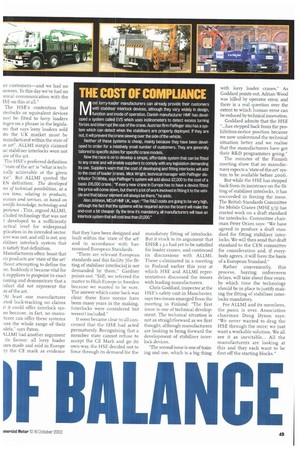THE COST OF COMPLIANCE
Page 49

If you've noticed an error in this article please click here to report it so we can fix it.
miost lorry-loader manufacturers can already provide their customers with stabiliser interlock devices, although they vary widely in design, function and mode of operation. Danish manufacturer HMF has developed a system called [VS which uses inclinometers to detect excess turning forces and interrupt the use of the crane. Austrian firm Palfinger also has a system which can detect when the stabilisers are properly deployed. If they are not, it will prevent the crane slewing over the side of the vehicle.
Neither of these systems is cheap, mainly because they have been developed to order for a relatively small number of customers. They are generally tailored to specific duties for specific crane models, Now the race is on to develop a simple, affordable system that can be fitted to any crane and will enable suppliers to comply with any legislation demanding its use. Suppliers warn that the cost of developing and fining interlocks will add to the cost of loader cranes. Mick Wright, technical manager with Palfinger distributor TH White, says Palfinger's system will add about £2,000 to the cost of a basic £15,000 crane. "If every new crane in Europe has to have a device fitted the price will come down, but there's a lot of work involved in fitting it to the vehicle and that labour element will always be there," he adds.
Alan Johnson, MD of HMF UK, says : "The R&D costs are going to be very high, although the fact that the systems will be required across the board will make the end-cost a bit cheaper. By the time it's mandatory, all manufacturers will have an interlock system that will cost less than £1,000.




































































































































































